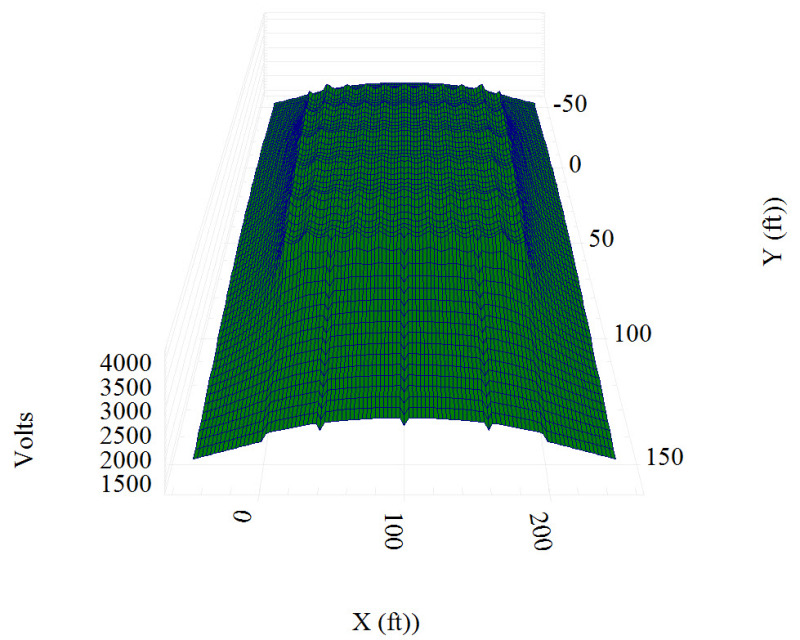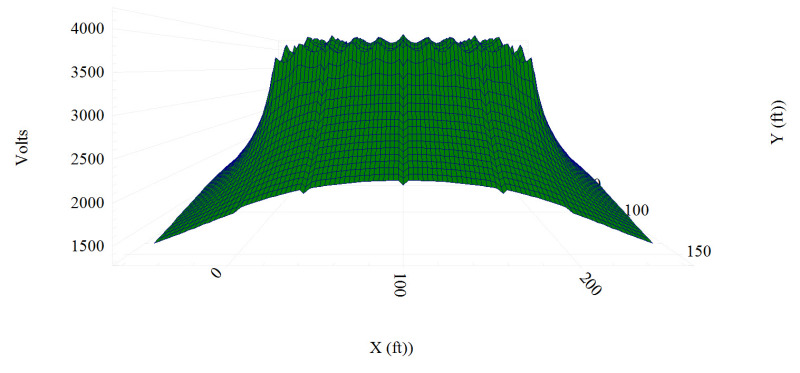In reference to the GPR voltage gradients around a substation during a close-in fault and the extreme drop-off point at the edge of the station ground grid, is there a possible touch (not step) potential hazard if a metal stake was planted into the ground within say 10 feet away from the fence? Hypothetically:
1) There is a grid extension of 3 feet beyond the fence so that the metal stake is actually 7 feet away from the edge of the ground grid.
2) Case 1: The metal stake is not grounded to the station grounding system nor is it grounded at all other than being planted say 1 foot into the ground, or
3) Case 2: The metal stake is not grounded to the station grounding system, but is grounded with an independent grounding rod connection at its location in addition to being planted 1 foot into the ground.
4) Case 3: If the above metal stake is actually the end of a cyclone fence that goes 100 feet away from the substation fence, is there touch potential hazards along this fence that are considered transferred voltages even though the this fence is not connected to the substation grounding system?
Of course, there are many factors that need to be considered in order to define the magnitude of the Touch potential and whether or not it is truly a hazard. Let’s say the available fault current is 20,000 amps, clearing time is around .7 seconds, current division factor is .5, surface covering is average native soil (not substation rock). Regardless of the values of these factors, does any touch potential exist?
1) There is a grid extension of 3 feet beyond the fence so that the metal stake is actually 7 feet away from the edge of the ground grid.
2) Case 1: The metal stake is not grounded to the station grounding system nor is it grounded at all other than being planted say 1 foot into the ground, or
3) Case 2: The metal stake is not grounded to the station grounding system, but is grounded with an independent grounding rod connection at its location in addition to being planted 1 foot into the ground.
4) Case 3: If the above metal stake is actually the end of a cyclone fence that goes 100 feet away from the substation fence, is there touch potential hazards along this fence that are considered transferred voltages even though the this fence is not connected to the substation grounding system?
Of course, there are many factors that need to be considered in order to define the magnitude of the Touch potential and whether or not it is truly a hazard. Let’s say the available fault current is 20,000 amps, clearing time is around .7 seconds, current division factor is .5, surface covering is average native soil (not substation rock). Regardless of the values of these factors, does any touch potential exist?


